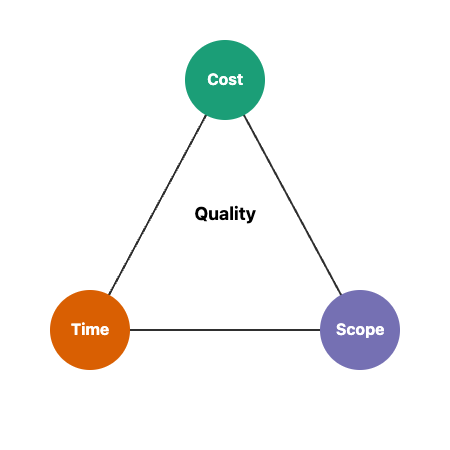Getting your project off to a strong start isn’t just about numbers on a spreadsheet — it’s about making thoughtful estimates, matching the right people to the right tasks, and being open about what’s possible. When you estimate effort and allocate resources with care, you set your team up for success, build trust, and keep everyone moving in the same direction.
As you plan and launch your project, you’ll run into situations like these:
- Figuring out how much time and money a project will really take, even when there are lots of unknowns or moving parts
- Deciding who should do what, especially when team members have different strengths, workloads, or availability
- Balancing tight budgets, deadlines, or limited resources while still aiming to deliver quality work and meet project goals
So, where do you start?
Accurate estimation begins with clarity. Break each big task into smaller, manageable steps. For example, launching a new feature might look like this:
To estimate cost, multiply hours by each role’s hourly rate. Always add a buffer (like 10%) for the unexpected, and be upfront about your assumptions. This builds trust and helps everyone know what to expect.
Resource allocation is about matching people to the work that fits them best. Consider each person’s skills, experience, and current workload.
Let’s say your team looks like this:
- Gael: UI/UX expert
- Riley: backend developer
- Blake: QA specialist
- Val: associate software tester
Here’s how a real conversation might play out:
- Jessica: Chris, I’ve estimated the new dashboard feature will take about 40 hours: 8 for design, 24 for development, and 8 for testing. Does that sound reasonable to you?
- Chris: That seems realistic. Who do you have in mind for each part?
- Jessica: I’d like Gael to handle the design since they're strongest there, Riley for development, and Blake for testing. But I know Blake has been busy. Should we adjust?
- Chris: Good call. Blake's at capacity, so maybe Val can help with testing this time. Let’s check with them and make sure everyone’s clear on their roles.
- Jessica: Great, I’ll update the plan and confirm with Val. I’ll also add a 10% buffer in case we hit any snags.
Notice how Jessica breaks down the work, matches tasks to each person’s strengths, and checks in about workloads. Chris helps by suggesting a practical adjustment and making sure everyone is in the loop.
Every project has limits — budget, time, team size. The key is to balance what’s possible with what’s needed. A helpful way to visualize this is the Project Management Triangle:

- Scope: What needs to be done (features, requirements, deliverables)
- Time: The schedule or deadline
- Cost: The budget or resources available
You can adjust any two, but the third will be affected. For example, if you want to add more features (increase scope) but keep the same deadline (time), you’ll likely need more budget (cost). Or, if your budget is fixed and the deadline is tight, you may need to reduce the scope.
Communicating these trade-offs early and often builds trust and helps everyone understand the “why” behind your plan.
By understanding how to estimate, allocate, and balance your resources, you’ll be able to set realistic expectations, make smart trade-offs, and guide your team toward successful project delivery. Up next, you'll get to practice skills in hands-on scenarios, where you’ll estimate, allocate, and communicate trade-offs in a realistic project setting.
